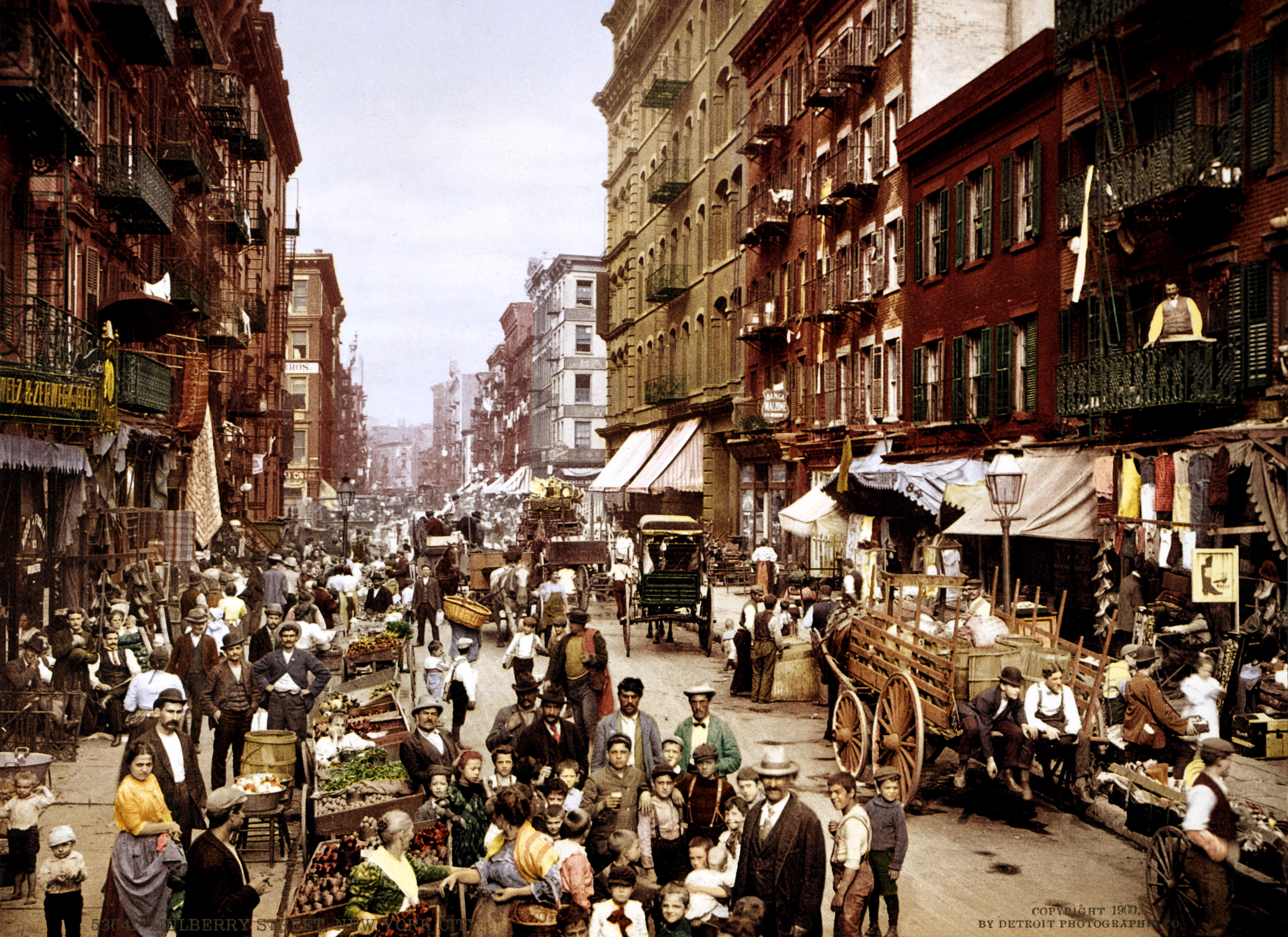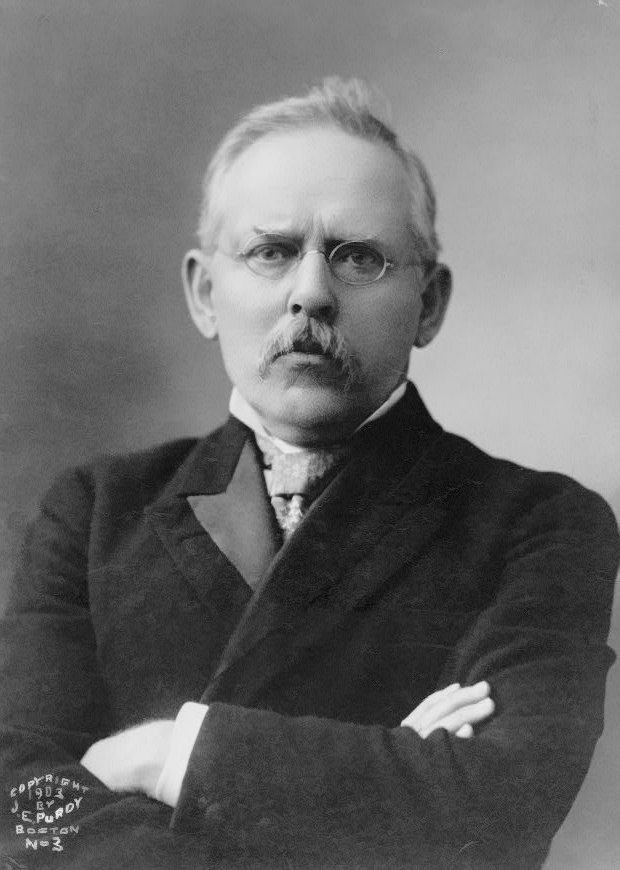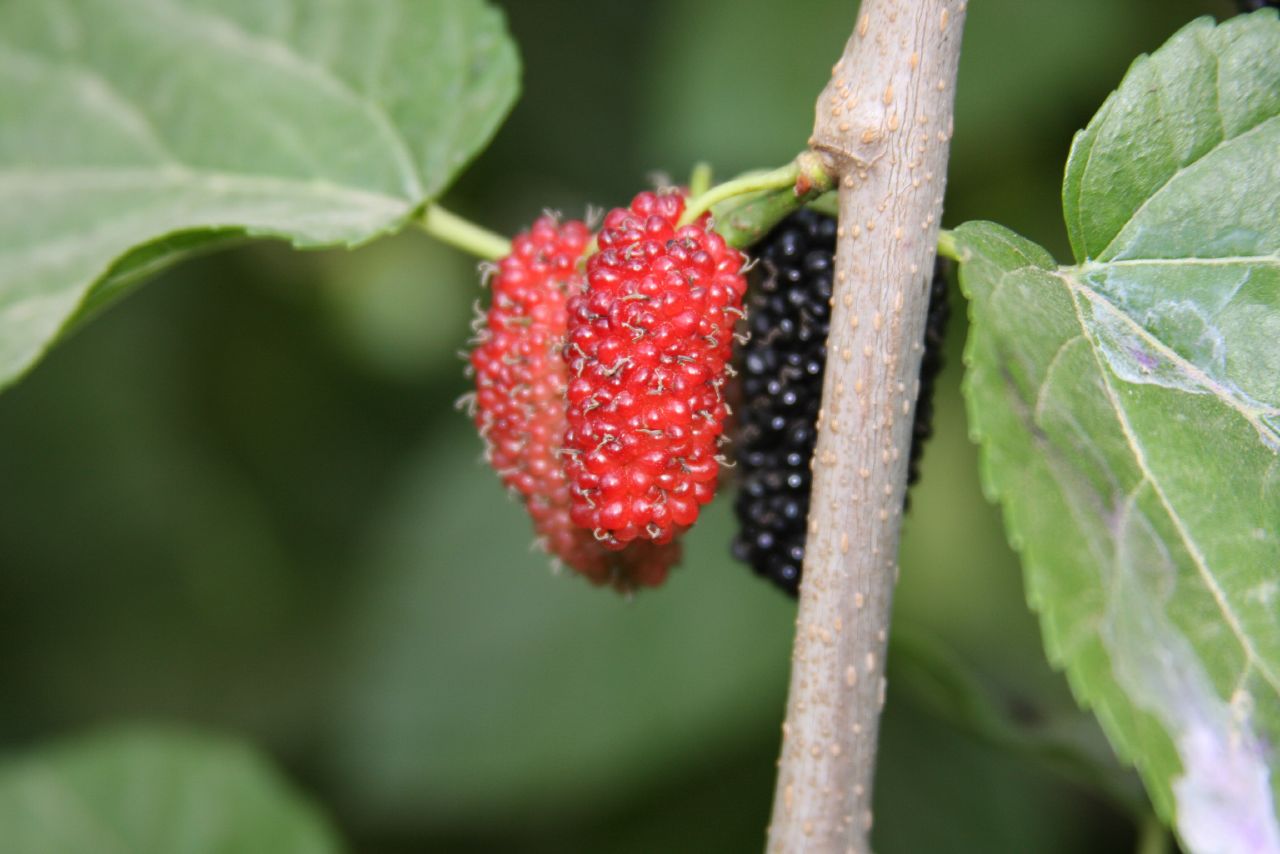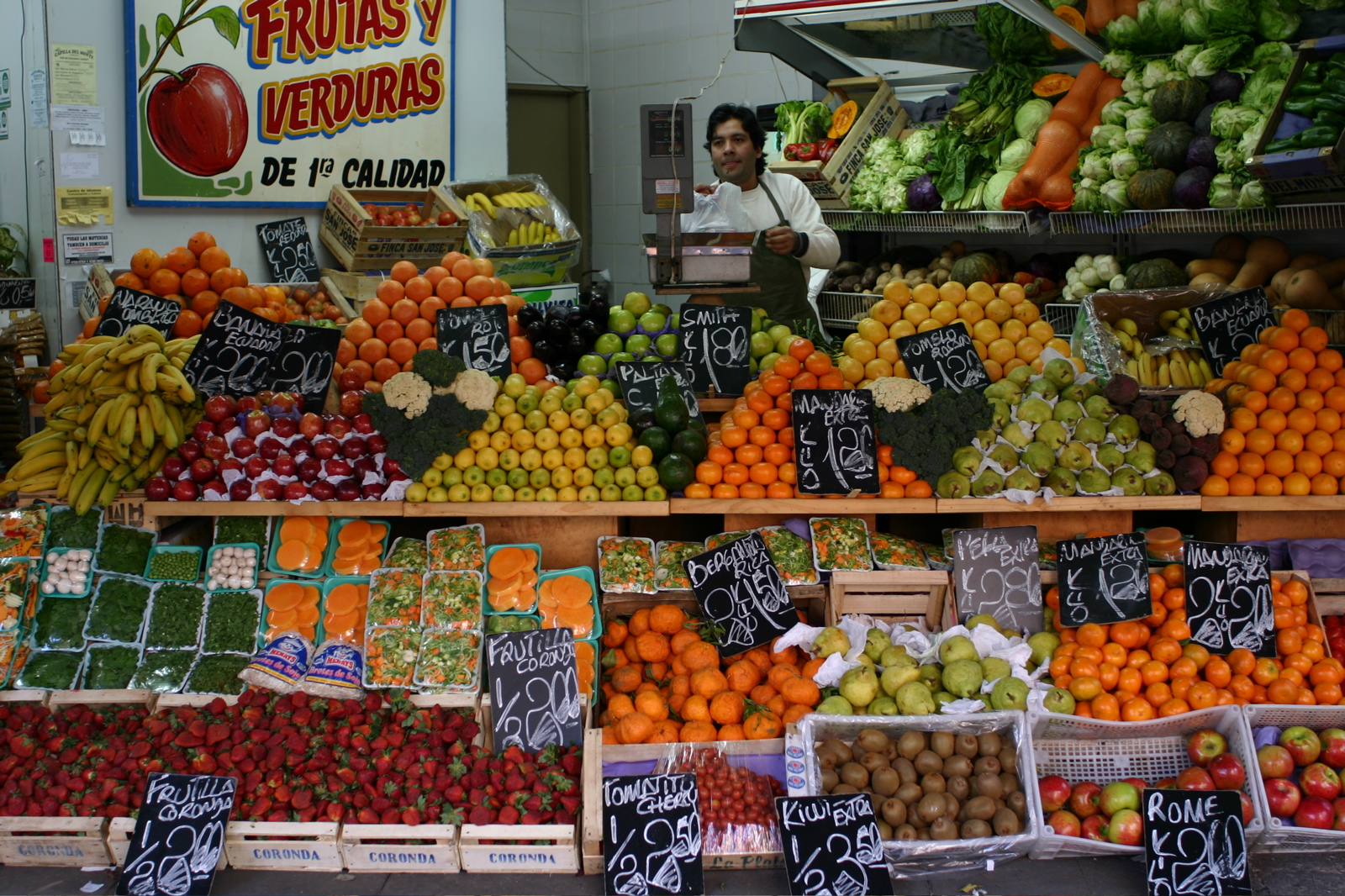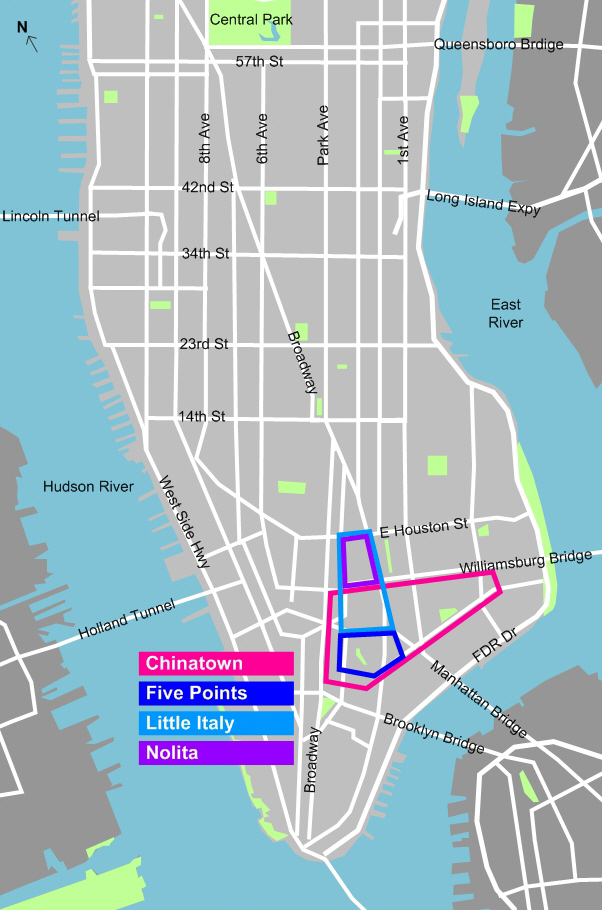|
Mulberry Street (Manhattan)
Mulberry Street is a principal thoroughfare in Lower Manhattan, New York City, United States. It is historically associated with Italian-American culture and history, and in the late 19th and early 20th centuries was the heart of Manhattan's Little Italy, Manhattan, Little Italy. The street was listed on maps of the area since at least 1755. The "Bend" in Mulberry, where the street changes direction from southeast to northwest to a northerly direction, was made to avoid the wetlands surrounding the Collect Pond. During the period of the American Revolution, Mulberry Street was usually referred to as "Slaughter-house Street", named for the slaughterhouse of Nicholas Bayard on what is now the southwest corner of Mulberry and Bayard Streets, which was located there until the summer of 1784, when it was ordered to be removed to Corlaer's Hook. Mulberry Bend, formed by Mulberry Street on the east and Orange Street on the west, was historically part of the core of the infamous Five ... [...More Info...] [...Related Items...] OR: [Wikipedia] [Google] [Baidu] |
Bleecker Street
Bleecker Street is an east–west street in Lower Manhattan, New York City. It is most famous today as a Greenwich Village nightlife, nightclub district. The street connects a neighborhood popular today for music venues and comedy as well as an important gay village, center of LGBT history and LGBT culture , culture and Bohemianism, bohemian tradition. The street is named after the family name of Anthony Lispenard Bleecker, a banker, the father of Anthony Bleecker, a 19th-century writer, through whose family farm the street once ran. Bleecker Street connects Abingdon Square (the intersection of Eighth Avenue (Manhattan), Eighth Avenue and Hudson Street (Manhattan), Hudson Street) in the West Village, Manhattan, West Village, to the Bowery in the East Village, Manhattan, East Village and NoHo. History Bleecker Street was named by and after the Anthony Lispenard Bleecker, Bleecker family because the street ran through the family's farm. In 1808, Anthony Lispenard Bleecker and ... [...More Info...] [...Related Items...] OR: [Wikipedia] [Google] [Baidu] |
Mott Street
Mott Street () is a narrow but busy thoroughfare that runs in a north–south direction in the New York City borough (New York City), borough of Manhattan. It is regarded as Chinatown, Manhattan, Chinatown's unofficial "Main Street". Mott Street runs from Bleecker Street in the north to Chatham Square, Manhattan, Chatham Square in the south. It is a one-way street with southbound-running vehicular traffic only. History Early configuration Mott Street existed in its current configuration by the mid-18th century. At that time, Mott Street passed just to the east of the Collect Pond (Manhattan), Collect Pond; Collect Park today is three blocks to the west at Centre Street (Manhattan), Centre Street. Like many streets that predated Manhattan's grid, Mott Street meandered around natural features of the landscape rather than running through or over them. It was the need to avoid the now-long since paved-over Collect Pond that gave Mott Street its characteristic "bend" to the northea ... [...More Info...] [...Related Items...] OR: [Wikipedia] [Google] [Baidu] |
Puck Building
The Puck Building is a mixed-use building at 295–309 Lafayette Street in the SoHo, Manhattan, SoHo and Nolita neighborhoods of Manhattan in New York City, New York, U.S. The building was designed by Albert Wagner (architect), Albert Wagner in the Romanesque Revival architecture, Romanesque Revival style, with elements inspired by the German Rundbogenstil style. It is composed of two sections: the original seven-story building to the north and a nine-story southern annex. The Lafayette Street Elevation (architecture), elevation of the facade was designed by Herman Wagner in a similar style to the original building. The Puck Building is a New York City designated landmark and is listed on the National Register of Historic Places. The Puck Building occupies the block bounded by Lafayette, Houston Street, Houston, Mulberry Street (Manhattan), Mulberry, and Jersey streets. The red brick facade is divided vertically into Bay (architecture), bays of uniform width. The facade is also ... [...More Info...] [...Related Items...] OR: [Wikipedia] [Google] [Baidu] |
Jacob Riis
Jacob August Riis ( ; May 3, 1849 – May 26, 1914) was a Danish-American social reformer, " muck-raking" journalist, and social documentary photographer. He contributed significantly to the cause of urban reform in the United States of America at the turn of the twentieth century. He is known for using his photographic and journalistic talents to help the impoverished in New York City; those impoverished New Yorkers were the subject of most of his prolific writings and photography. He endorsed the implementation of "model tenements" in New York with the help of humanitarian Lawrence Veiller. He was an early proponent of the newly practicable casual photography and one of the first to adopt photographic flash. While living in New York, Riis experienced poverty and became a police reporter writing about the quality of life in the slums. He attempted to alleviate the poor living conditions of poor people by exposing these conditions to the middle and upper classes. Biography ... [...More Info...] [...Related Items...] OR: [Wikipedia] [Google] [Baidu] |
Scribner's Magazine
''Scribner's Magazine'' was an American periodical published by the publishing house of Charles Scribner's Sons from January 1887 to May 1939. ''Scribner's Magazine'' was the second magazine out of the Scribner's firm, after the publication of '' Scribner's Monthly''. Charles Scribner's Sons spent over $500,000 setting up the magazine, to compete with the already successful '' Harper's Monthly'' and ''The Atlantic Monthly''. ''Scribner's Magazine'' was launched in 1887, and was the first of any magazine to introduce color illustrations. The magazine ceased publication in 1939. The magazine contained many engravings by famous artists of the 19th and early 20th centuries, as well as articles by important authors of the time, including John Thomason, Elisabeth Woodbridge Morris, Clarence Cook, and President Theodore Roosevelt. The magazine had high sales when Roosevelt started contributing, reaching over 200,000, but gradually lost circulation after World War I. History ''Sc ... [...More Info...] [...Related Items...] OR: [Wikipedia] [Google] [Baidu] |
Mulberry Tree
''Morus'', a genus of flowering plants in the family Moraceae, consists of 19 species of deciduous trees commonly known as mulberries, growing wild and under cultivation in many temperate world regions. Generally, the genus has 64 subordinate taxa, though the three most common are referred to as white, red, and black, originating from the color of their dormant buds and not necessarily the fruit color (''Morus alba'', '' M. rubra'', and '' M. nigra'', respectively), with numerous cultivars and some taxa currently unchecked and awaiting taxonomic scrutiny. ''M. alba'' is native to South Asia, but is widely distributed across Europe, Southern Africa, South America, and North America. ''M. alba'' is also the species most preferred by the silkworm. It is regarded as an invasive species in Brazil, the United States and some states of Australia. The closely related genus '' Broussonetia'' is also commonly known as mulberry, notably the paper mulberry (''Brousso ... [...More Info...] [...Related Items...] OR: [Wikipedia] [Google] [Baidu] |
Bandits Roost, 59 And A Half Mulberry Street
Banditry is a type of organized crime committed by outlaws typically involving the threat or use of violence. A person who engages in banditry is known as a bandit and primarily commits crimes such as extortion, robbery, kidnapping, and murder, either as an individual or in groups. Banditry is a vague concept of criminality and in modern usage can be synonymous with gangsterism, brigandage, marauding, terrorism, piracy, and thievery. Definitions The term ''bandit'' (introduced to English via Italian around 1776) originates with the early Germanic legal practice of outlawing criminals, termed ''*bamnan'' (English ban). The legal term in the Holy Roman Empire was ''Acht'' or '' Reichsacht'', translated as "Imperial ban". In modern Italian, the equivalent word "bandito" literally means banned or a banned person. The New English Dictionary on Historical Principles (NED) defined "bandit" in 1885 as "one who is proscribed or outlawed; hence, a lawless desperate marauder, a brigand ... [...More Info...] [...Related Items...] OR: [Wikipedia] [Google] [Baidu] |
Funeral Home
A funeral home, funeral parlor or mortuary is a business that provides burial, entombment and cremation services for the dead and their families. These services may include a prepared visitation and funeral, and the provision of a chapel for the funeral, memorial service/service of remembrance or celebration of life. Services Funeral homes arrange services in accordance with the wishes of surviving friends and family, whether immediate next of kin or an executor so named in a legal will. The funeral home often takes care of the necessary paperwork, permits, and other details, such as making arrangements with the cemetery, and providing obituaries to the news media. Its pews do not feature racks behind them like in synagogues and churches. The funeral business has a history that dates to the age of the Egyptians who mastered the science of preservation. In recent years many funeral homes have started posting obituaries online and use materials submitted by families to create me ... [...More Info...] [...Related Items...] OR: [Wikipedia] [Google] [Baidu] |
New York City Department Of Parks And Recreation
The New York City Department of Parks and Recreation, also called the Parks Department or NYC Parks, is the department of the government of New York City responsible for maintaining the city's parks system, preserving and maintaining the ecological diversity of the city's natural areas, and furnishing recreational opportunities for city's residents and visitors. NYC Parks maintains more than 1,700 public spaces, including parks, playgrounds and recreational facilities, across the city's Boroughs of New York City, five boroughs. It is responsible for over 1,000 playgrounds, 800 playing fields, 550 tennis courts, 35 major recreation centers, 66 pools, of beaches, and 13 golf courses, as well as 7 nature centers, 6 ice rink, ice skating rinks, over 2,000 greenstreets, and 4 major stadiums. NYC Parks also cares for park flora and fauna, community gardens, 23 historic houses, over 1,200 statues and monuments, and more than 2.5 million trees. The total area of the properties maintai ... [...More Info...] [...Related Items...] OR: [Wikipedia] [Google] [Baidu] |
Columbus Park (Manhattan)
Columbus Park formerly known as Mulberry Bend Park, Five Points, Manhattan, Five Points Park and Paradise Park, is a public park in Chinatown, Manhattan, Chinatown, Manhattan, in New York City that was built in 1897. American photojournalist Jacob Riis (best known for How the Other Half Lives, ''How The Other Half Lives'') is generally credited with "transforming Mulberry Bend from a 'notorious slum' to a park" in order to improve tenement dwellers' quality of life in the neighborhood. History Prior slum During the 19th century, Mulberry Bend (a curve of Mulberry Street (Manhattan), Mulberry Street) was the center of the Five Points, Manhattan, Five Points neighborhood, the most dangerous ghetto area of immigrant New York. Before the park's establishment, Mulberry Bend was an alley Riis considered the "foul core of New York’s slums." The Bend is the site of Riis's 1888 photograph, ''Bandits' Roost, 59 1/2 Mulberry Street.Michael Burgan, ''Exposing Hidden Worlds: How ... [...More Info...] [...Related Items...] OR: [Wikipedia] [Google] [Baidu] |
Green Grocer
A greengrocer is a person who owns or operates a shop selling primarily fruit and vegetables. The term may also be used to refer to a shop selling primarily produce. It is used predominantly in the United Kingdom and Australia. In the United States, the terms ''produce store'' or ''produce shop'' are used. By the 1940s, produce sales (measured in tonnage) made at grocery stores had surpassed those made at produce stores. While once common in the United Kingdom and Australia, the increase in popularity of supermarkets caused greengrocer shops to become rarer, though they may still be found in smaller towns and villages. Today, greengrocers can also be found in street markets, malls, and supermarket produce departments. Greengrocers' apostrophe Because of its common misuse on greengrocers' signs (e.g ''apple's'', ''orange's'', or ''banana's''), an apostrophe used incorrectly to form a plural In many languages, a plural (sometimes list of glossing abbreviations, abbreviated ... [...More Info...] [...Related Items...] OR: [Wikipedia] [Google] [Baidu] |
Chinatown, Manhattan
Manhattan's Chinatown is a Neighborhoods in Manhattan, neighborhood in Lower Manhattan, New York City, bordering the Lower East Side to its east, Little Italy, Manhattan, Little Italy to its north, Civic Center, Manhattan, Civic Center to its south, and Tribeca to its west. With an estimated population of 90,000 to 100,000 people, Chinatown is home to the highest concentration of Chinese people in New York City, Chinese people in the Western Hemisphere.* * * * * Manhattan's Chinatown is also one of the oldest Overseas Chinese, Chinese ethnic enclaves. The Manhattan Chinatown is one of Chinese Americans in New York City, nine Chinatown neighborhoods in New York City, as well as one of twelve in the New York metropolitan area, which contains the largest ethnic Chinese population outside of Asia, comprising an estimated 893,697 uniracial individuals as of 2017. Chinatown is also a densely populated neighborhood, with over 141,000 residents living in its vicinity encompassing 1 ... [...More Info...] [...Related Items...] OR: [Wikipedia] [Google] [Baidu] |
